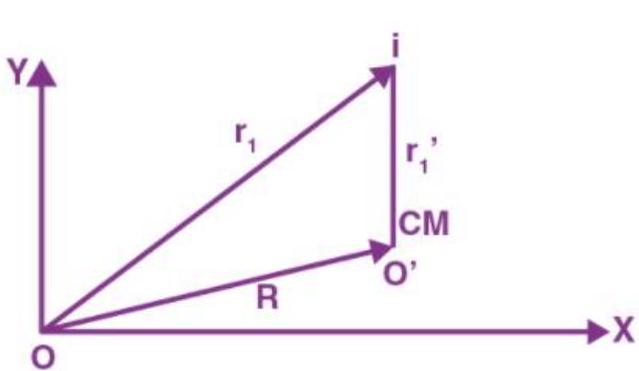i)Here ![]() also,
also, ![]()
Where ![]() and
and ![]() denote the radius vector and velocity of the
denote the radius vector and velocity of the ![]() particle refers to the new origin as the centre of mass
particle refers to the new origin as the centre of mass ![]() ‘, and
‘, and ![]() is the velocity of the centre of mass with respect to
is the velocity of the centre of mass with respect to ![]() .
.

Momentum of ![]() particle can be calculated as,
particle can be calculated as,
![]()

[ From equation (1)]
Or, ![]()
(ii) Kinetic energy of system of particles can be calculated as
![]()
![]()


![]()
![]()
Where ![]() or
or ![]() is the total mass of the system.
is the total mass of the system.
![]()
![]() kinetic energy of motion about the centre of mass.
kinetic energy of motion about the centre of mass.
Or, ![]() kinetic energy of motion of centre of mass.(Proved)
kinetic energy of motion of centre of mass.(Proved)
